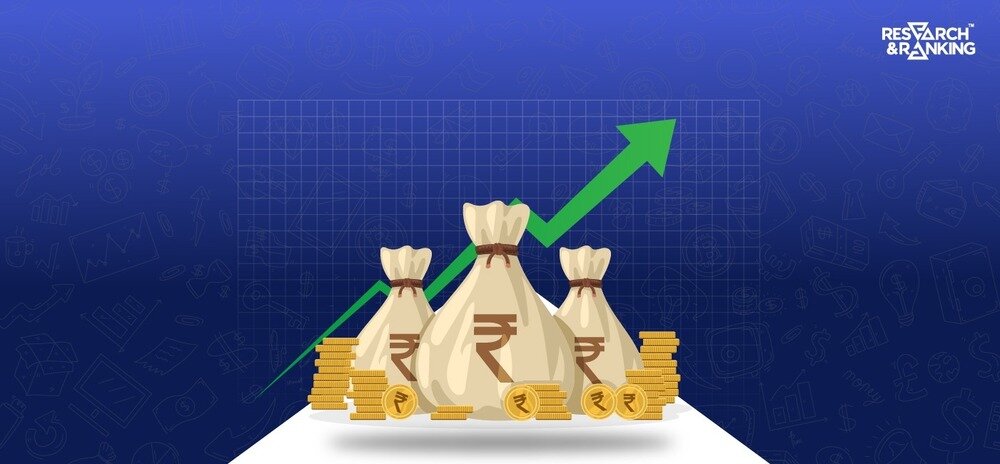Ever wondered how we measure the financial worth of companies in the stock market? That’s where market capitalization comes in—a simple yet powerful tool that reveals the value and size of businesses. Let’s explore this financial metric together and see what it tells about companies in terms of size, potential, and even your investment strategy.
What is Market Cap?
Market Cap is the shorter version of a company’s Market Capitalization. The market cap meaning of a company is quite easy to understand and calculate. It’s basically the total value of a company’s outstanding shares. Think of it like this: each share is a tiny slice of the company pie, and the market cap is the whole pie. So, a company with 10 lakh shares priced at ₹10 each would have a market cap of ₹1 crore (10 lakhs x ₹10). Easy, right?
Key Takeaways:
- Market cap is another way to say “company size” in the stock market.
- A high market cap means that of a big, established company, while a low one suggests a smaller, newer player.
- In India, market cap of companies are classified under Large cap (₹20,000 crore+), Mid-cap (₹5,000 crore – ₹20,000 crore) and Small-cap (below ₹5,000 crore)
- It’s calculated by multiplying the total number of shares by the share price.
- Big doesn’t always mean better returns, and high market cap doesn’t equal high share price or guarantee success.
- Free float market cap focuses on publicly traded shares for a clearer picture for individual investors.
- Market cap is a tool, not a magic bullet. Combine it with research and analysis for smarter decisions.
Understanding Market Cap:
Why should you, a regular investor, care about market cap? Well, it’s like a sneak peek into a company’s soul. A high market cap, like India’s Reliance Industries, Infosys, or TATA, tells you investors have faith in the company’s future, pushing up its share price. On the flip side, a low market cap, like some startups, might indicate potential for growth but also higher risk.
Indian Market Cap Breakdown:
Companies are usually categorized based on their market capitalization (market cap), which gives investors a quick way to gauge their size and potential. Here’s a breakdown of the different types you’ll encounter:
Large-Caps (₹20,000 crore+): Think giants like Reliance, HDFC Bank, TCS. Stable, low risk, low growth.
Mid-Caps (₹5,000 crore – ₹20,000 crore): These companies balance stability and growth. Higher volatility than large-caps.
Small-Caps (below ₹5,000 crore): High-risk, high-reward companies. Limited track record, low liquidity.
Remember: Each company is unique, so consider other factors like sector and growth potential before investing.
Importance of Market Cap:
Market cap plays a crucial role in your investment strategy. If you’re looking for stability, large-cap companies with a market cap of over ₹20,000 crore (think Reliance, HDFC Bank) might work in your favor. They’re like the experienced participants of the market, less likely to make a wrong move. But if you’re a thrill-seeker, small-cap companies with a market cap below ₹5,000 crore could be your adventure buddies. They might offer higher growth potential but also a challenging ride.
Market Cap Formula:
Calculating the market cap is very simple. Just multiply the share price and the number of outstanding shares, and you’ve got the company’s market cap.
Let’s say a company has shares priced at ₹100 each and 2 lakh shares outstanding. Their market cap would be:
Market Cap = Share Price × Number of Shares
Market Cap = ₹100/share × 2,00,000 shares
Market Cap = ₹2,00,00,000 (that’s 2 crore rupees)
Market Cap and Investment Strategy:
Market cap can be a valuable tool in your investment toolbox. Use it to understand a company’s size, risk profile, and potential growth. Remember, a high market cap doesn’t guarantee success, and a low one doesn’t spell disaster. Do your research, consider your risk tolerance, and build a diversified portfolio reflecting your investment goals.
Diluted Market Cap:
Sometimes companies issue new shares, which can dilute the value of existing shares. This means your slice of the pie gets a little smaller. To account for this, there’s something called a diluted market cap, which considers the potential impact of future stock issuances.
Free float market cap
These aren’t just about the company’s size; it’s the part you can actually trade. It ignores locked-away shares and focuses on the ones available for buying and selling. It offers a more accurate view of the company’s value to public investors like you and me. This makes comparisons between companies fairer and shows who truly controls it. However, remember it’s just one piece of the puzzle—research before making decisions!
Know more about
IPO
Changes in Market Cap
Market cap isn’t static. It fluctuates daily based on changes in share price and the number of outstanding shares. So, that big company you were eyeing yesterday might be a bit smaller today (or vice versa).
Let’s bust some common Misconceptions about Market Caps
- Giant size, giant returns: No! Big market caps like Reliance means stability, not guaranteed growth. Mar
- Market cap, a golden ticket: Wrong. It’s a snapshot, not a guarantee. Remember fallen stars like Kingfisher Airlines?
- Big market cap, big price tag: Not always. Think Infosys (big market cap, low price) vs. Bajaj Finance (small market cap, high price).
- Market cap predicts the future: Don’t count on it. News, markets, and earnings play a big role too.
- Market cap is the only guide: Think again! Deep research into the company, industry, and future is key.
What Does a High Market Cap Tell You?
A high market cap suggests a well-established company with a strong track record, attracting significant investor interest. It’s like a giant, reassuring oak tree in the investment forest.
Is It Better to Have a Large Market Capitalization?
Not necessarily. Both large and small caps offer different advantages and risks. Choose what aligns with your investment goals and risk tolerance.
Does Market Cap Affect Stock Price?
Absolutely! Market cap changes often reflect investor sentiment changes, which can impact the share price. But remember, it’s a two-way street: rising share prices can boost market cap.
The Bottom Line:
Market cap is a powerful tool for understanding company size and potential, but it’s only part of the picture. Combine it with other research and analysis to make well-informed investment choices. Perhaps one day, you’ll find yourself with a market cap that rivals the giants!
Check Out: INNOVA CAPTAB IPO
What is the Market Cap in stocks?
Market capitalization (market cap) in stocks in the total estimated value of a company based on the current price of its outstanding shares. Think of it as the company’s “price tag” on the stock market.
How to calculate Market Cap?
Multiply the company’s current share price by the number of outstanding shares. It’s a straightforward calculation that provides a snapshot of a company’s size.
What is Free Float Market Cap?
It is a refined version of the market cap that solely considers publicly traded shares, excluding those restricted to founders or institutions. This provides a more accurate picture of the value accessible to individual investors like you and me.
How useful was this post?
Click on a star to rate it!
Average rating 1 / 5. Vote count: 1
No votes so far! Be the first to rate this post.
I’m Archana R. Chettiar, an experienced content creator with
an affinity for writing on personal finance and other financial content. I
love to write on equity investing, retirement, managing money, and more.
























